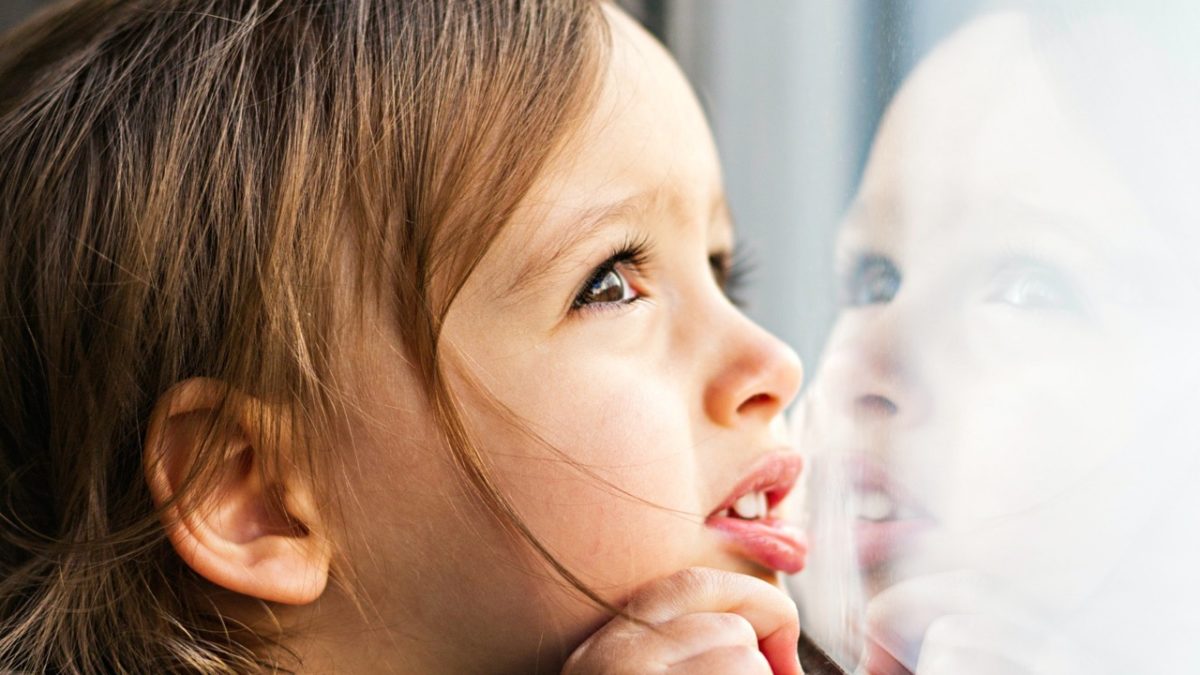According to JAMA, doctors are writing 6 times as many antibiotic prescriptions for adult's sore throats as they should! And a whopping 70% of children with sore throats who are seen by a physician are treated with antibiotics, though at most 30% have strep (Group A Streptococcus, of GAS) infections, and half of those who have positive cultures are just strep carriers who have a cold or another common viral infection!. Yet according to the Centers for Disease Control and Prevention (CDC) most sore throats with or without treatment most are better in 3-4 days.
So why are so many antibiotic prescriptions written? Well, it seems that most doctors, in spite of efforts from the CDC and other national health organizations to get docs to prescribe them less, are not getting the message and think they are needed to prevent the big scary concern – acute rheumatic fever, a potential consequence of strep. Yet this complication is exceedingly rare in the US. In fact, viruses, like the ones that cause a cold or the flu, cause most sore throats.
Antibiotic prescribing to patients who are unlikely to benefit is serious business – that is, BIG PHARMA business. All antibiotic use increases the prevalence of antibiotic-resistant bacteria –a global health crisis now sometimes leading to fatal, untreatable infections. Less dramatically, but still serious, antibiotic use leads to diarrhea in 5% to 25% of people treated with them and at least 1 in 1000 patients’ visits an ED for a serious adverse drug event! In children antibiotic use has been associated with asthma, eczema, and even ulcerative colitis! The good — and bad –news is that strep infections are still sensitive to penicillin so are still readily treated – but at least effectively.
How to Know When You Need an Antibiotic
According to the CDC, here's the differentiation between viral or allergy-driven sore throats (the kind that don't require antibiotic treatment) and strep infection:
The following symptoms are often associated with sore throats caused by a viral infection or due to allergies:
- Sneezing
- Coughing
- Watery eyes
- Mild headache or body aches
- Runny nose
- Low fever (less than 101 °F)
Symptoms more commonly associated with strep throat include:
- Red and swollen tonsils, sometimes with white patches or streaks of pus
- Tiny red spots (petechiae) on the soft or hard palate (the roof of the mouth)
- High fever (101 °F or above)
- Nausea
- Vomiting
- Swollen lymph nodes in the neck
- Severe headache or body aches
- Rash
What About Strep Throat?
Adults
In adults, only 5-10% of all sore throats are due to group A Strep (GAS), and only GAS sore throats are an indication for antibiotic treatment. Since symptoms and a medical exam alone do not distinguish between strep and a viral sore throat. a rapid antigen detection test (RADT) is necessary to establish a strep diagnosis.
If you meet two or more of what are called the Centor criteria (fever, tonsillar exudates, tender swollen lymph nodes in your neck, no cough) you should receive a rapid antigen strep test (RADT). Throat cultures are not otherwise routinely recommended for adults. A positive strep test justifies antibiotic use.
If the throat culture is positive, giving antibiotics is not technically a medical necessity, though I do recommend it, as do most medical doctors. Antibiotic treatment does reduce the albeit small, but real risk of rheumatic heart disease, and reduces the transmission of strep to others in the family, so if you have a young baby or someone with immune problems in the household, it is prudent to consider using an antibiotic. Also, if your child does have strep, s/he cannot return to school until she’s been on antibiotics for 24 hours or until the illness is completely cleared up.
Kids
Streptococcal pharyngitis is primarily a disease of children 5-15 years old and is rare in children under 3 years old.In kids, during the winter and spring, up to 20% of asymptomatic children can be colonized with group A strep, leading to more false positives from RADT-testing and increases in unnecessary antibiotic exposure. Further, as with adults, symptoms and physical exam findings alone do not distinguish between GAS and viral sore throat.
Here are some guidelines from the Centers for Disease Control for helping you choose next steps in testing and treatment:
Children with sore throat plus 2 or more of the following symptoms should have a RADT test:
- Any child with a sore throat and no cough
- Presence of tonsillar exudates or swelling
- Fever (or recent fever since other symptoms started)
- Age < 15 years
Children under 3 generally do not need a strep test; GAS rarely causes sore throat at that age, and rheumatic fever is uncommon.
According to the Infectious Diseases Society of America and the CDC, If the RADT comes back negative, a culture should be done before starting antibiotics; if the RADT comes back positive, antibiotics are appropriate. The throat culture is different from the rapid strep test done in the office – it is actually a culture the doctor sends out to a lab and usually takes about a day or two to get results back. They recommend that the physician write a prescription for antibiotics but suggest that it not be filled unless the throat culture comes back positive.
Treating strep with an antibiotic may also prevent a consequence of untreated or inadequately treated strep infection – a condition called Pediatric autoimmune neuropsychiatric disorder – or PANDAS. PANDAS is a pediatric condition with symptoms of obsessive compulsive disorder (OCD) or tic disorders and are exacerbated by group A streptococcal (GAS) infection. One theory suggests that strep infection in a susceptible child, causes an abnormal immune response with resultant central nervous system disorders.
If you do choose to use an antibiotic for what seems like a true strep infection — a totally appropriate decision– make sure to also use a probiotic while on the antibiotic and for a few weeks after. Even little children can safely take a probiotic. This can help to prevent some of the health consequences to the gut flora associated with antibiotic use. It is most common between the ages of 5 and 12 years old, and the association with strep may just be one of numerous causative or contributing factors. Nonetheless, this is one reason that it may be prudent to treat culture diagnosed or high Centor scoring presumed strep infections with an antibiotic course. Any child presenting with PANDAS symptoms in conjunction with strep throat should absolutely be treated with an appropriate course of antibiotics.
Red Flags: When to See a Doctor
Medical attention is absolutely needed if you see any of the following red flags: sore throats lasting more than a week, a child looking very sick, shaking chills, high fever (greater than 102°F [39°C]) with any of these other symptoms, night sweats, and neck swelling or pain only on one side, talking funny, or drooling. These red flags might indicate a more serious illness. Also, if a sore throat in a teenager goes away and comes back with a vengeance or just won't clear up, this can also be a sign of sever infection called Lemierre's disease or a peritonsillar abscess, and requires immediate medical attention.
Natural Sore Throat Remedies
Home remedies can be used to reduce discomfort from a sore throat:
Here’s what I do in my practice – and in my family for garden-variety sore throats. Treating strep without antibiotics is a little more involved. The comfort measures below can still be used, but some more advanced herbal therapies are also often needed. Garlic and goldenseal figure big in that picture but I don’t address that here.
Common Home Remedies
- Simplify the diet and remove all dairy and sugar, including fruit juices
- Gargle with warm salt water once every hour – or more often–to help reduce swelling and relieve discomfort. To prepare mix ½ teaspoon of sea salt into 1 cup of warm water. Even little kids can learn to gargle and it’s ok if they swallow some of the mixture.
- Stay hydrated — Warm beverages, such as tea or broth can help decrease throat irritation. If kids (or grown ups) are having trouble drinking because of pain, using a drinking straw can really help. Lemon water can also be soothing.
- Use a vaporizer or humidifier. Warm or cool mist can soothe inflamed air passages.
- Get plenty of rest rather than rushing back to work or school.
Herbal Remedies and Supplements
- Garlic Lemonade: One of my classic and reliable remedies – palatable to most and appropriate for all ages and even during pregnancy and breastfeeding. To prepare: Finely mince 2 cloves of fresh garlic (do not put them in a press) and place them in a 1-quart mason jar. Fill the jar with boiling water and cover for 30 minutes. Strain out the garlic, and to the liquid add the juice of 1 whole lemon. Sweeten to taste with honey. Give warm, can be taken freely.
- Herbal sprays and remedies containing Osha, echinacea, and propolis are particularly great for sore throats, viral infections, and sometimes even strep. Goldenseal is another reliable antimicrobial and anti-inflammatory but tastes awful so use in tincture and for the strong of taste. Licorice is classic in tea and tincture, as well as lozenges. None of these are appropriate in pregnancy, except licorice for no more than a few days at a time, and not if you have high blood pressure.
- Herb Pharm Soothing Throat Spray: Ingredients: Echinacea root,
- Propolis, Hyssop leaf & flower, Sage leaf, St. John's Wort flowering tops. (Not for use in pregnancy; ok for use for a few days while breastfeeding)
- Gaia Herbs Throat Shield Lozenges (not for pregnant women or little kids because of choking risk)
- Ricola Throat Lozenges (Lemon and Echinacea varieties are safe for short term use during pregnancy)
- Zinc lozenges (not for children under 5; children 5-10 years old: 5-10mg/day, over 10 years old 15-20 mg once or twice daily)
Want to learn a whole lot more about natural remedies for kids that you can learn to use at home? Study with me in my latest course, Healthy All Year and boost your child's immunity and learn to reduce unnecessary antibiotics at the same time! Click here to learn more or sign up now.
P.S. I've got a gift for you!!! Get my FREE Ebook, Herbal Medicines for Kids. To receive your copy, click here



